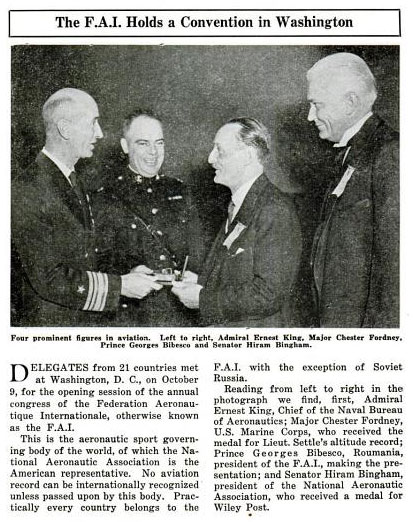THANK YOU!
YOUR PURCHASE OF THESE BOOKS SUPPORTS THE WEB SITES THAT BRING TO YOU THE HISTORY BEHIND OLD AIRFIELD REGISTERS
Your copy of the Davis-Monthan Airfield Register with all the pilots' signatures and helpful cross-references to pilots and their aircraft is available at the link. 375 pages with black & white photographs and extensive tables
---o0o---
The Congress of Ghosts (available as eBook) is an anniversary celebration for 2010. It is an historical biography, that celebrates the 5th year online of www.dmairfield.org and the 10th year of effort on the project dedicated to analyze and exhibit the history embodied in the Register of the Davis-Monthan Airfield, Tucson, AZ. This book includes over thirty people, aircraft and events that swirled through Tucson between 1925 and 1936. It includes across 277 pages previously unpublished photographs and texts, and facsimiles of personal letters, diaries and military orders. Order your copy at the link.
---o0o---
Military Aircraft of the Davis Monthan Register, 1925-1936 is available at the link. This book describes and illustrates with black & white photographs the majority of military aircraft that landed at the Davis-Monthan Airfield between 1925 and 1936. The book includes biographies of some of the pilots who flew the aircraft to Tucson as well as extensive listings of all the pilots and airplanes. Use this FORM to order a copy signed by the author, while supplies last.
---o0o---
Art Goebel's Own Story by Art Goebel (edited by G.W. Hyatt) is written in language that expands for us his life as a Golden Age aviation entrepreneur, who used his aviation exploits to build a business around his passion. Available as a free download at the link.
---o0o---
Winners' Viewpoints: The Great 1927 Trans-Pacific Dole Race (available as eBook) is available at the link. This book describes and illustrates with black & white photographs the majority of military aircraft that landed at the Davis-Monthan Airfield between 1925 and 1936. The book includes biographies of some of the pilots who flew the aircraft to Tucson as well as extensive listings of all the pilots and airplanes. Use this FORM to order a copy signed by the author, while supplies last.
---o0o---
Clover Field: The first Century of Aviation in the Golden State (available in paperback) With the 100th anniversary in 2017 of the use of Clover Field as a place to land aircraft in Santa Monica, this book celebrates that use by exploring some of the people and aircraft that made the airport great. 281 pages, black & white photographs.
---o0o---
SPONSORED LINKS
PLEASE HELP KEEP THESE WEB SITES ONLINE
FOR YOUR CONVENIENCE
You may NOW donate via PAYPAL by clicking the "Donate" icon below and using your credit card. You may use your card or your PAYPAL account. You are not required to have a PAYPAL account to donate.
Or you can scan the QR code below with your mobile device and be linked to your PayPal app.
 |
|---|
Either way, when your donation clears the PAYPAL system, a certified receipt from Delta Mike Airfield, Inc. will be emailed to you for your tax purposes.
---o0o---
HIRAM BINGHAM
 |
|---|
Hiram Bingham landed solo at Clover Field in the Great Lakes NC540K on March 24, 1934 (at age 59, see below). This was his only known presence at any of the suite of Delta Mike Airfield, Inc. Registers. His airplane, however, NC540K, had visited Clover Field a few years earlier, on Friday June 20, 1930. He left no clues in the Clover Field Register as to the purpose of his flight.
Few other pilots of the Clover Field Register were so accomplished in their lives as Bingham. At left is a biographical sketch from this REFERENCE (page 170). At the time it was written, he was in his second term as U.S. Senator from Connecticut. Another photograph of Bingham is at the link.
A similar, but much shorter, biography appeared in this REFERENCE. There Bingham is credited with writing the Air Commerce Act of 1926. This Act was the foundation for all the regulations and guidelines that would be published in future years by the Civil Aeronautics Authority and the contemporary Federal Aviation Administration.
He was an inexhaustible supporter of the new science of aviation. As an example, the U.S. Air Services magazine of February, 1927 published an abridged speech he gave from the Senate floor (PDF 1.5Mb).
Born in Hawaii in 1875, Bingham died 80 years later in Washington, DC of a respiratory ailment on June 6, 1956 (obituary below, right). In between, his accomplishments and personal life were captured in books, magazines, newspapers and scholarly journals.
 |
|---|
Bingham also has a prodigious Web presence, featured in such activites as university professor, archaeologist, historian, politician, legislator, aviator and explorer. In another age, he would have been called a Renaissance Man.
In the popular press he is best known as the explorer who "discovered" the 15th-century Incan city of Machu Picchu.
Bingham's work in Peru, and the artifacts he brought back to the United States, developed into a controversy that persists to this day. The Peruvian government was in dispute with Yale Univeristy, where the artifacts are archived, until 2007 when the University agreed to return most of the artifacts, keeping some for future research.
This decision was met with a lawsuit filed by Peru in U.S. federal court demanding that Yale return the entire collection. This controversey has received headlines even in 21st century newspapers, such as The New York Times issues of October 7, 2007 ("Stealing From the Incas"),and December 7, 2008 ("Debate Rages in Peru: Was a Lost City Ever Lost?")
This last article goes on to state, "Although Hiram Bingham has long been credited with discovering the Incan city of Machu Picchu in 1911, evidence has emerged that a German adventurer may have preceded him. [and] ... a confluence of contrary events has threatened to upend the legacy of Mr. Bingham, the ostensible model for the fictional Indiana Jones. Peru has threatened legal action against Yale to recover thousands of artifacts Mr. Bingham removed." Thus, his "discovery" of Machu Picchu is placed in doubt, as is the ethics and legality of his transport out of Peru of many thousands of Incan artifacts.
 |
|---|
As a college professor, he had the distinction of being on the faculties of Harvard, Princeton and Yale, all leading academic rivals to this day.
In politics he came to the unique position of being, for the State of Connecticut, the Lieutenant Governor, Governor-elect, and U.S. Senator-elect all within a week or two. He was sworn in as Governor, then resigned to be the new Senator in 1924 after the death of the late Senator. Interestingliy, he did not solicit the office. Rather, he was drafted to run for the Senatorship, the nomination coming from a special State convention on the first ballot by an overwhelming majority.
Notably, his obituary, right, cites a connection with the Communist baiting of the McCarthy era. It appears that his innovation in that regard, to make evidence conform with only "reasonable doubt" of a government employee's loyalty, made it easier for the government to relieve an employee from their service.
In aviation, he was the president of the National Aeronautic Association, and, according to the article in The New York Times of July 25, 1931, left, he held that position for at least three years. He was in good company. This article is a Who's Who of pilots and passengers who signed the Delta Mike Airfield, Inc. suite of Registers.
Including Bingham, they are Amelia Earhart, Porter Adams, C.F. Lienesch, Edith Foltz, J.W. Beretta, Walter G. Kilner, G.H Benefield, Henry Belin DuPont and John H. Jouett.
The byline 'Woman's Year in the Air' at the top of the left-hand article refers to a follow-on piece that described the annual report of the National Aeronautical Association for 1931. The report found it "interesting to note" that women made six of the eight new international records established the past year in the United States. The records included speed, altitude, and endurance aloft. A few were established by signers of the Registers featured on these Web sites.
Many male Register pilots learned to fly with the military, and Bingham was no different. The main discrepancy was that he learned to fly at a much later age, (42, according to the article at right) then served in an aviation management capacity as a Lieutenant Colonel during WWI in Europe.
Bingham's personal life was as interesting, if not as illustrious, as his careers in academia, politics, exploration and aviation. He married Alfreda in 1900 and they remained married until March 27, 1937, raising seven sons in the meantime. An article describing the divorce appeared in The New York Times of March 28, 1937. It cited Mrs. Bingham's complaint of being treated "absolutely like a stranger" by her husband for over four years.
A second article in The Times of June 26, 1937 (only three months later) explained the situation. Reading between the lines, Bingham had a relationship with another woman. In concert with Bingham's divorce, Mrs. Suzanne Carroll Hill was conveniently divorced from her husband, Brigadier General John Philip Hill, on April 22nd. They had three grown children. According to the June 26th article, Hill and Bingham were married on Monday, June 28th.
 |
The marriage must have been good for him, since he wrote two books in short succession about subjects dear to his heart. The first was a biography of Elihu Yale, benefactor of what is now Yale University. It was titled, "Elihu Yale: The American Nabob of Queen Square." The book review appearing in The New York Times of December 10, 1939 credits Bingham with publishing, "... one of the liveliest pieces of biographical writing right now to be found."
His second book, "Lost City of the Incas," was published a decade later. It, too, received a positive review in The New York Times of December 5, 1948. It concludes, "... although specialists will systematically puncture his theories, the fabulous city of Machu Piccu, as revealed here, will forever stand as Dr. Hiram Bingham's archeological monument."
The article, right, from Popular Aviation (PA), January, 1935, captures him in his role as president of the National Aeronautic Association.
SPONSORED LINKS
---o0o---
THIS PAGE UPLOADED: 06/13/13 REVISED: 06/12/14, 06/27/14
